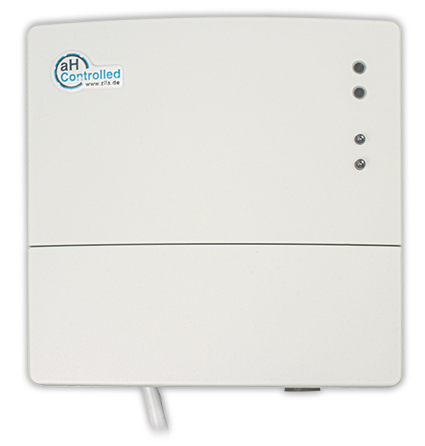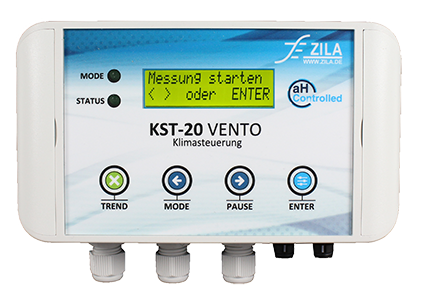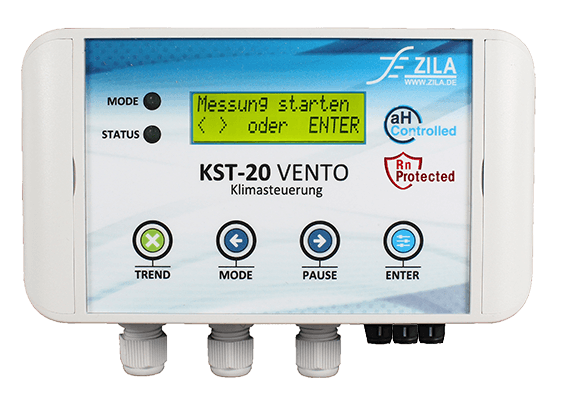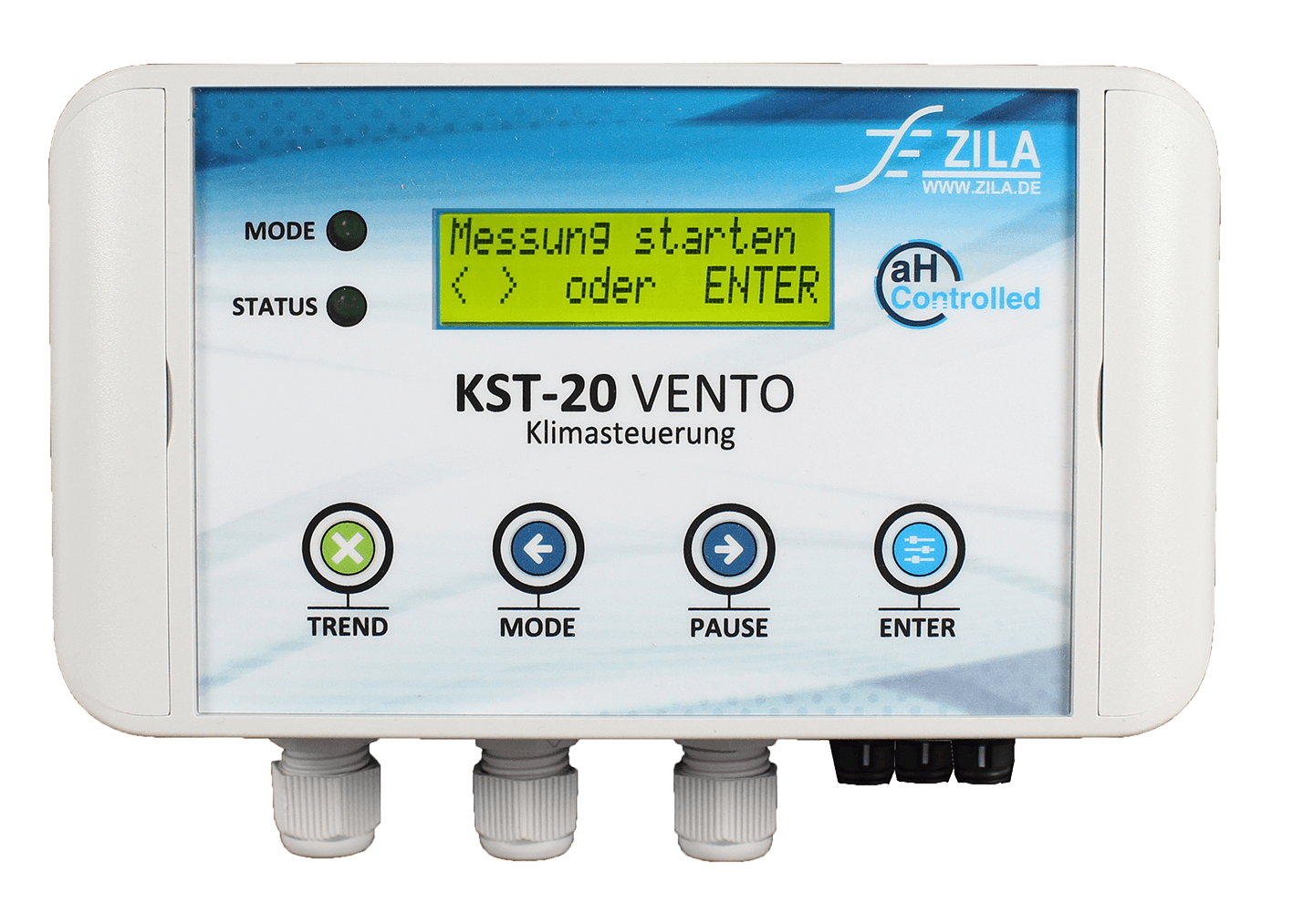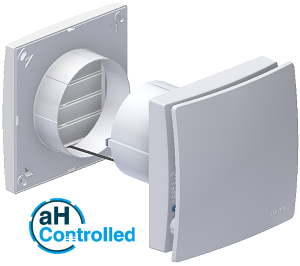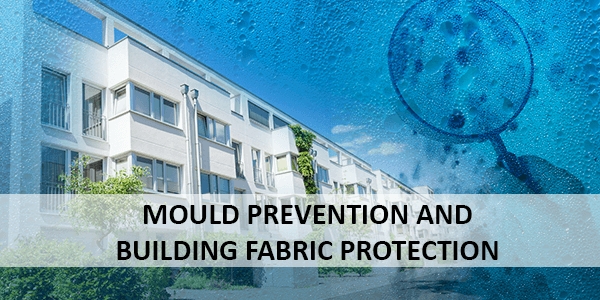
- Written by ZILA GmbH
Mould prevention and building fabric protection
More specifically, this means that a ventilation measure is required if a defined minimum volume flow for moisture protection can no longer be ensured by the volume flow given by infiltration on average during a heating period. In practice, this leads to preventing mould infestation and moisture damage.
Factors influencing the comfort zone
Nasty smells in the room air
Nasty smells in the indoor air are caused by so-called 'volatile organic compounds' (VOC). The air people breathe in contains various compounds such as alkanes, alkenes, terpenes, esters, naphthalene and many others. These compounds can be further classified according to their boiling range: Some substances are highly volatile, others are slightly volatile whilst some are hardly volatile. This is similar to moist rooms: Moisture can occur in solid form (as ice), in liquid form (condensed) or in gaseous state (in the air). Consequently, the fact that nasty smells have a negative effect on our well-being is obvious.
Temperature and humidity (climate)
The humidity level of a room is mainly influenced by everlyday life activities, such as washing, cooking and showering. Especially in the cold season, this fact is often visible at windows. But did you know that each person in a room emits approx. 30 - 40 g of water per hour, even during light activity? The higher the temperature of a room, the more water we humans emit. Even indoor plants release plenty of moisture. For example, a rubber tree with a height of 1 m produces approx. 4.4 g of moisture per hour. Rooms, flats and offices, are sensible comfort zones for people, combining the prevailing room temperature and the relative humidity of the air.
Temperature and humidity measurement directly on the brickwork and in cellars - just in case you are facing mould infestation
A climatic status recording, i.e. temperature and humidity measurement in case of bad odours, mould formation or damage due to humidity is absolutely necessary. If the values were recorded over a period of several days, specific conclusions can be drawn about the ventilation behaviour of the people in the room or building concerned.
Mould prevention and dehumidification of cellars and basements
Inadequate ventilation leads to mould growth. In order to avoid this, there are compact and intelligent solutions providing for an optimum feel-good climate. Our devices work fully automatically, user-independently and thus significantly contribute to the protection of the building concerned and its environment. In this context, ZILA uses the technological approach of comparing the absolute humidity indoors and outdoors. For this purpose, the measured parameters temperature and relative humidity are measured by means of climate sensors, which record both values in one sensor. From this, the absolute humidity can be derived. If the absolute humidity outdoors is lower than indoors, ventilation is recommended in order to dehumidify the room air. Furthermore, we recommend CO2 concentration measurement. For mould prevention and basement dehumidification, ZILA also offers innovative products and solutions.
Our product range includes:
- Climate and ventilation controls for dehumidification and ventilation of cellars/basements, flats, offices, classrooms and conference rooms.
- Solutions with special climate requirements
- Ventilation control with CO2 sensor technology to detect hazards for machines and plants
For a compact summary of detailed product information, please check out the below table.
Devices for ventilation, dehumidification and cooling
| Product | Description | Details |
|
KST-20 Calima
|
The KST-20 Calima is a climate control with aH-Controlled technology for ventilation, dehumidification and cooling for all kinds of private, commercial and industrial rooms. With its operating modes for living space ventilation and room dehumidification, the climate control KST-20 Calima can be implemented flexibly in almost any residential, work and industrial area. | Climate control KST-20 Calima |
|
KST-20 Vento
|
The KST-20 Vento is a climate control with aH-Controlled technology for ventilation, dehumidification and cooling for all kinds of private, commercial and industrial rooms. With its three operating modes for ventilation, dehumidification and cooling, the climate control KST-20 Vento can be implemented flexibly in almost any residential, work and industrial area. | KST-20 Vento - Ventilation, dehumidification, cooling |
|
KST-20 Vento/RN
|
The KST-20 Vento/RN is a climate control with aH-Controlled technology and RN-Protected label for ventilation and dehumidification for any private, commercial and industrial rooms. With its three operating modes (ventilation, dehumidification and radon measurement), the KST-20 Vento can be used flexibly in almost any kind of living, working and industrial environment. |
KST-20 Vento with radon ventilation |
|
KST-20 Vento/CO2
|
The KST-20 Vento/CO2 is a climate control with aH-Controlled technology for ventilation and dehumidification of any private, commercial and industrial premises. With its three operating modes (ventilation, dehumidification and CO2 measurement) the climate control KST-20 Vento can be flexibly used in almost every living, working and industrial area. | KST-20 Vento with air quality monitoring function |
|
Aero_aH 100
|
The Aero_aH 100 is an exhaust air fan for small spaces up to 25m² (~90m³) and provides for automatic, user-independent and climate controlled dehumidification. The device comes with an integrated dehumidification control as well as an indoor and outdoor climate sensor. Controlled dehumidification is achieved by comparing the indoor and outdoor climate. To support and enhance dehumidification, additionally, users can directly connect and control a supply air fan with the Aero_aH 100. | Automatic room dehumidification with our exhaust fan Aero_aH 100 |

